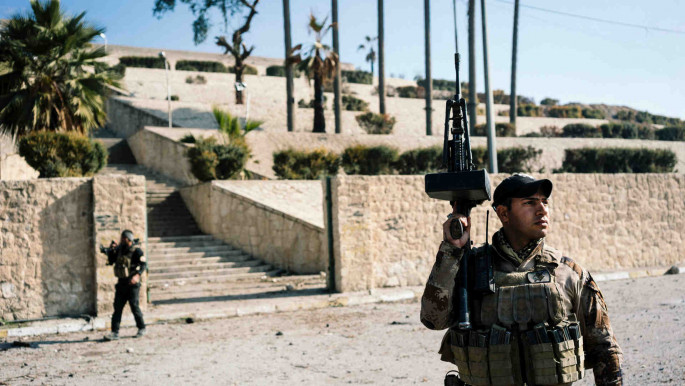Priceless Assyrian treasures discovered among Mosul's mountains of destruction
The brutal military campaigns of the Islamic State group have claimed thousands of lives and led to the destruction of priceless artefacts and ancient ruins.
Many of those lost forever are central to Iraq and Syria's rich cultural history and identity.
According to a recent report from the Iraqi Kurdistan regional government as many as 100 sacred buildings have been damaged or raised to the ground by the extremist group in Iraq.
These include historic sites in the ancient Iraqi city of Nimrud and Hatra.
Over the border in Syria, IS has also destroyed ancient sites including the majestic Arch of Triumph in the ancient Roman city of Palymra.
However, among the chaos and destruction wreaked by IS, a group of archaeologists in Mosul have discovered a previously unknown Assyrian palace on a hilltop liberated by Iraqi forces last month.
In 2014, IS militants destroyed the Tomb of the Prophet Jonah, or Yunus in the Quran, in 2014, shortly after embarking on a series of lighting raids capturing vast swathes of territory straddling Iraq and Syria.
 |
| Iraqi special forces guard the Nabi Yusuf shrine in Mosul, January 2017 [AFP] |
However, archaeologists have revealed to The Telegraph that IS militants also tunnelled below the Nabi Unis Shrine in their search for artefacts to loot.
The extremist group is said to have made millions from the black-market trade of artefacts, even setting up a department to handle "war spoils".
While experts have noted that IS most likely looted priceless artefacts from the site, they have also expressed excitement at what remains.
"There's a huge amount of history down there, not just ornamental stones," Professor Eleanor Robson, chair of the British Institute for the Study of Iraq, told The Telegraph.
"It is an opportunity to finally map the treasure-house of the world's first great empire, from the period of its greatest success."
Among the priceless artefacts located in the area since it was liberated are cuneiform inscriptions believed to date back to 672 BC and the rule of Assyrian King Esarhaddon – who thousands of years ago rebuilt the city of Babylon after it was destroyed by his father.
Other discoveries include ancient Assyrian stone sculptures depicting ancient mythological figures.
A six person Iraqi team is conducting emergency documentation of archaeological sites around Mosul with remote consultation from the British Institute for the Study of Iraq and other international organisations.
It is hoped this will allow achaelogists to map what has been lost to the jihadis, and retrieive the remaining treasures that are key to Iraq's identity.





 Follow the Middle East's top stories in English at The New Arab on Google News
Follow the Middle East's top stories in English at The New Arab on Google News


